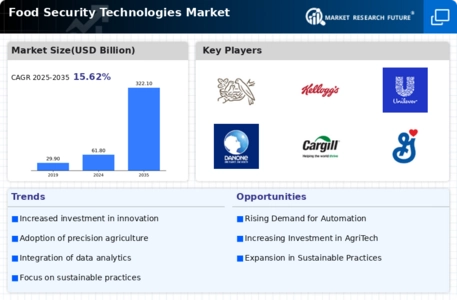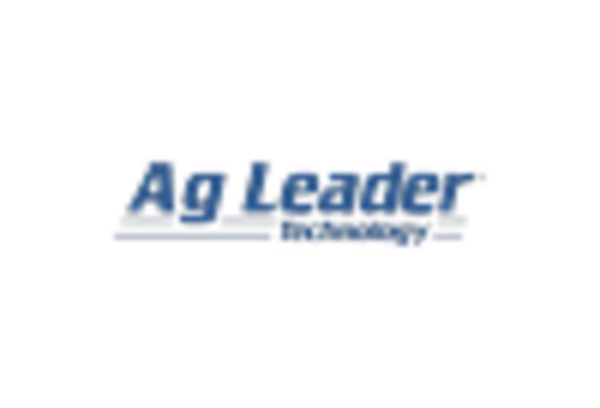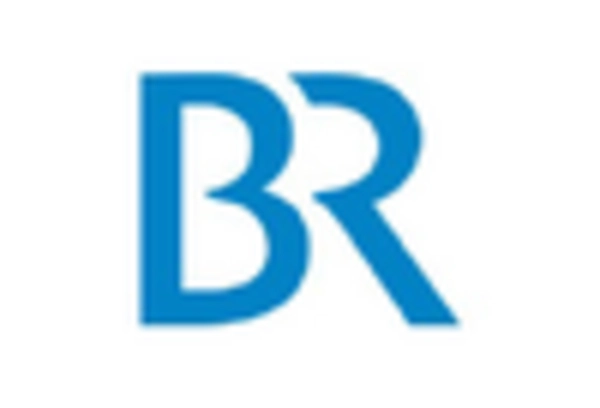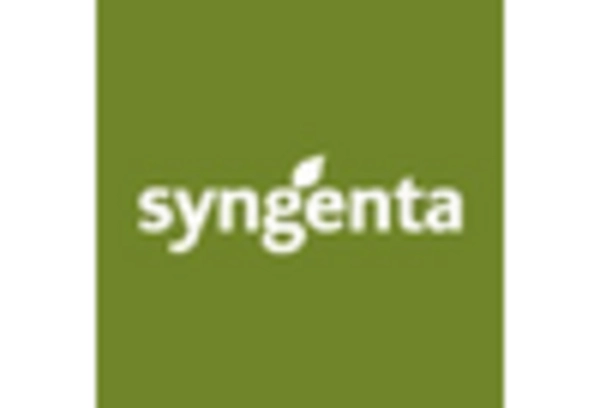Government Initiatives and Support
Government policies and initiatives play a crucial role in shaping the Food Security Technologies Market. Many governments are implementing programs aimed at enhancing food security through technological innovation. This includes funding for research and development, subsidies for adopting new technologies, and creating favorable regulatory environments. For example, initiatives that promote precision agriculture and biotechnology are gaining traction, with some countries allocating significant budgets to support these efforts. Such government backing is likely to stimulate growth and innovation within the Food Security Technologies Market.
Advancements in Data Analytics and AI
The integration of data analytics and artificial intelligence in agriculture is transforming the Food Security Technologies Market. These technologies enable farmers to make informed decisions based on real-time data, optimizing resource allocation and improving crop management. For instance, predictive analytics can enhance yield forecasting, allowing for better planning and resource distribution. The market for AI in agriculture is projected to reach several billion dollars by 2027, indicating a robust growth trajectory. This technological advancement is likely to enhance productivity and efficiency, thereby bolstering the Food Security Technologies Market.
Rising Global Population and Urbanization
The increasing global population and rapid urbanization are exerting pressure on food production systems, thereby driving the Food Security Technologies Market. As urban areas expand, the demand for efficient food production technologies becomes more critical. It is estimated that by 2050, the world population will reach nearly 10 billion, necessitating a 70% increase in food production. This demographic shift is likely to spur investments in technologies that enhance agricultural productivity and food distribution systems, thereby propelling the Food Security Technologies Market forward.
Emergence of Climate-Resilient Technologies
Climate change poses significant challenges to food security, prompting the development of climate-resilient technologies within the Food Security Technologies Market. Innovations such as drought-resistant crops, advanced irrigation systems, and climate-smart agricultural practices are gaining prominence. These technologies aim to mitigate the adverse effects of climate change on food production. Research indicates that climate-resilient practices can potentially increase food production in vulnerable regions by up to 50%. As the impacts of climate change become more pronounced, the demand for such technologies is likely to escalate, further driving the Food Security Technologies Market.
Increasing Demand for Sustainable Practices
The Food Security Technologies Market is witnessing a pronounced shift towards sustainable agricultural practices. As consumers become more environmentally conscious, there is a growing demand for technologies that promote sustainability. This includes innovations in crop management, soil health, and water conservation. According to recent data, sustainable agriculture practices can potentially increase crop yields by up to 30% while reducing environmental impact. This trend is likely to drive investments in technologies that enhance resource efficiency and minimize waste, thereby supporting the overall growth of the Food Security Technologies Market.


















Leave a Comment